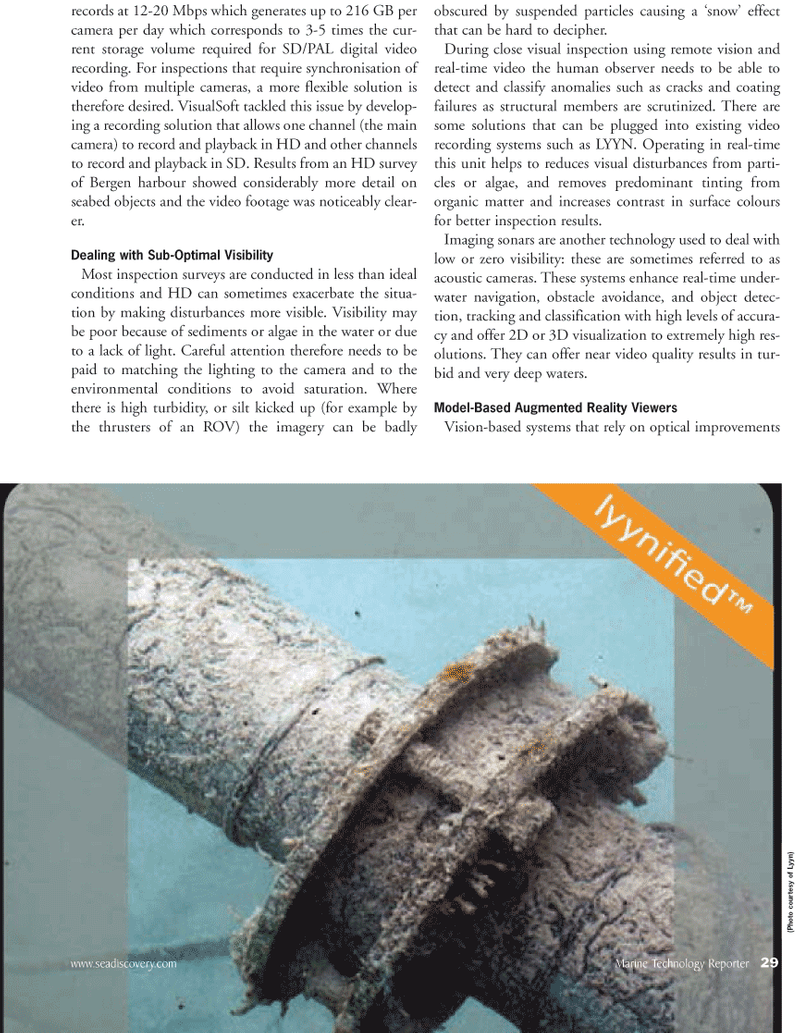
Page 29: of Marine Technology Magazine (October 2010)
Ocean Engineering & Design
Read this page in Pdf, Flash or Html5 edition of October 2010 Marine Technology Magazine
www.seadiscovery.com Marine Technology Reporter 29 records at 12-20 Mbps which generates up to 216 GB per camera per day which corresponds to 3-5 times the cur- rent storage volume required for SD/PAL digital video recording. For inspections that require synchronisation of video from multiple cameras, a more flexible solution is therefore desired. VisualSoft tackled this issue by develop- ing a recording solution that allows one channel (the main camera) to record and playback in HD and other channels to record and playback in SD. Results from an HD survey of Bergen harbour showed considerably more detail on seabed objects and the video footage was noticeably clear- er.
Dealing with Sub-Optimal Visibility
Most inspection surveys are conducted in less than ideal conditions and HD can sometimes exacerbate the situa- tion by making disturbances more visible. Visibility may be poor because of sediments or algae in the water or due to a lack of light. Careful attention therefore needs to be paid to matching the lighting to the camera and to the environmental conditions to avoid saturation. Where there is high turbidity, or silt kicked up (for example by the thrusters of an ROV) the imagery can be badly obscured by suspended particles causing a ‘snow’ effect that can be hard to decipher.
During close visual inspection using remote vision and real-time video the human observer needs to be able to detect and classify anomalies such as cracks and coating failures as structural members are scrutinized. There are some solutions that can be plugged into existing video recording systems such as LYYN. Operating in real-time this unit helps to reduces visual disturbances from parti- cles or algae, and removes predominant tinting from organic matter and increases contrast in surface colours for better inspection results.
Imaging sonars are another technology used to deal with low or zero visibility: these are sometimes referred to as acoustic cameras. These systems enhance real-time under- water navigation, obstacle avoidance, and object detec- tion, tracking and classification with high levels of accura- cy and offer 2D or 3D visualization to extremely high res- olutions. They can offer near video quality results in tur- bid and very deep waters.
Model-Based Augmented Reality Viewers
Vision-based systems that rely on optical improvements (Photo cour tesy of L yyn)

 28
28

 30
30
